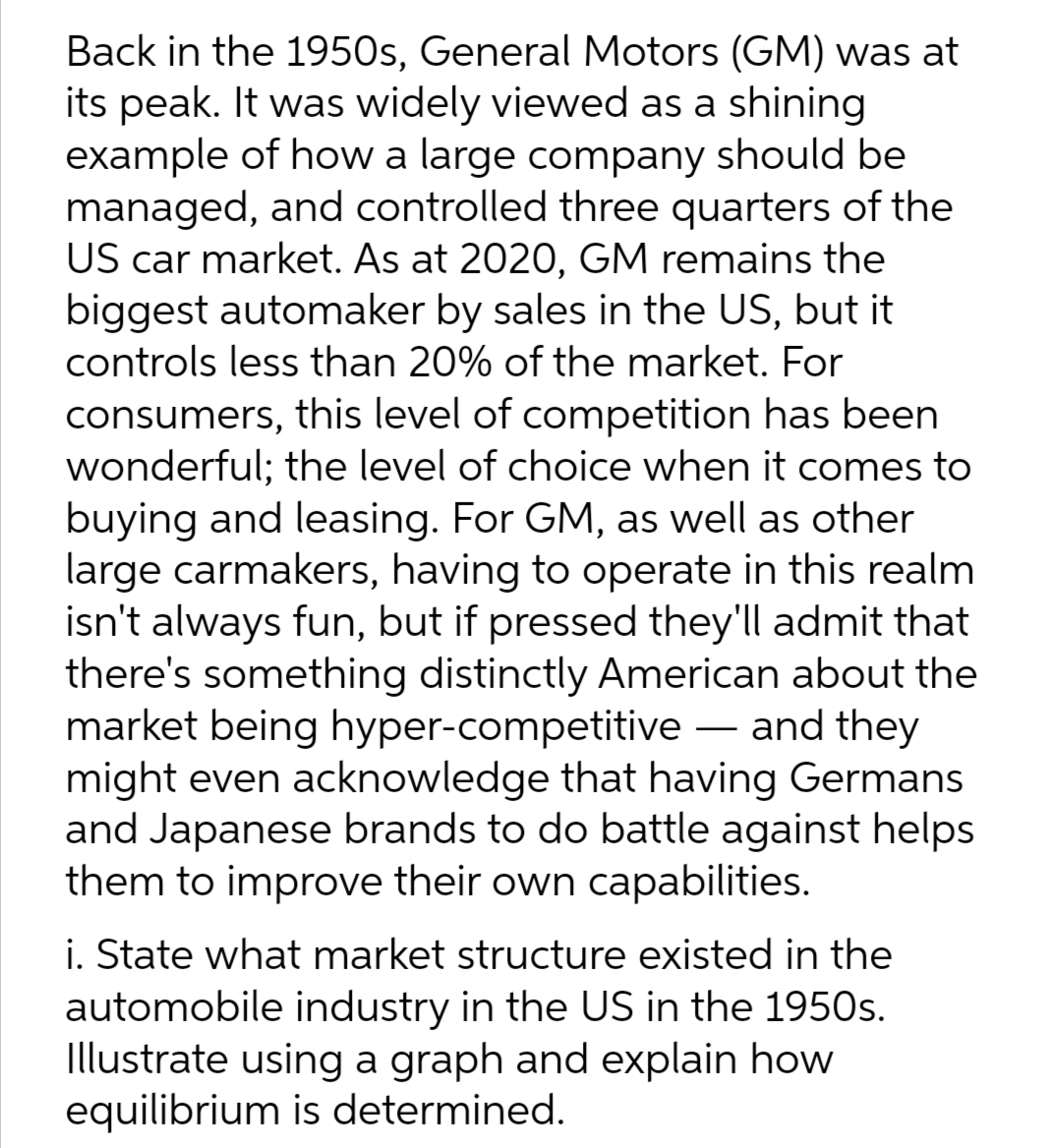peak. It was widely viewed as a shining ample of howa large company should be anaged, and controlled three quarters of th 5 car market. As at 2020, GM remains the ggest automaker by sales in the US, but it ntrols less than 20% of the market. For nsumers, this level of competition has beer onderful; the level of choice when it comes ying and leasing. For GM, as well as other ge carmakers, having to operate in this rea 't always fun, but if pressed they'll admit th ere's something distinctly American about t arket being hyper-competitive - and they ght even acknowledge that having Germa
peak. It was widely viewed as a shining ample of howa large company should be anaged, and controlled three quarters of th 5 car market. As at 2020, GM remains the ggest automaker by sales in the US, but it ntrols less than 20% of the market. For nsumers, this level of competition has beer onderful; the level of choice when it comes ying and leasing. For GM, as well as other ge carmakers, having to operate in this rea 't always fun, but if pressed they'll admit th ere's something distinctly American about t arket being hyper-competitive - and they ght even acknowledge that having Germa
Principles of Economics 2e
2nd Edition
ISBN:9781947172364
Author:Steven A. Greenlaw; David Shapiro
Publisher:Steven A. Greenlaw; David Shapiro
Chapter9: Monopoly
Section: Chapter Questions
Problem 1SCQ: Classify the following as a government-enforced barrier to entry, a banker to entry that is not...
Related questions
Question
3

Transcribed Image Text:Back in the 1950s, General Motors (GM) was at
its peak. It was widely viewed as a shining
example of how a large company should be
managed, and controlled three quarters of the
US car market. As at 2020, GM remains the
biggest automaker by sales in the US, but it
controls less than 20% of the market. For
consumers, this level of competition has been
wonderful; the level of choice when it comes to
buying and leasing. For GM, as well as other
large carmakers, having to operate in this realm
isn't always fun, but if pressed they'll admit that
there's something distinctly American about the
market being hyper-competitive – and they
might even acknowledge that having Germans
and Japanese brands to do battle against helps
them to improve their own capabilities.
i. State what market structure existed in the
automobile industry in the US in the 1950s.
Illustrate using a graph and explain how
equilibrium is determined.
Expert Solution
This question has been solved!
Explore an expertly crafted, step-by-step solution for a thorough understanding of key concepts.
Step by step
Solved in 2 steps

Follow-up Questions
Read through expert solutions to related follow-up questions below.
Follow-up Question
Can excess profit be earned in an oligopoly?
Solution
Follow-up Question
Can excess profit be earned in this industry in the long run?
Solution
Knowledge Booster
Learn more about
Need a deep-dive on the concept behind this application? Look no further. Learn more about this topic, economics and related others by exploring similar questions and additional content below.Recommended textbooks for you

Principles of Economics 2e
Economics
ISBN:
9781947172364
Author:
Steven A. Greenlaw; David Shapiro
Publisher:
OpenStax

Principles of Microeconomics (MindTap Course List)
Economics
ISBN:
9781305971493
Author:
N. Gregory Mankiw
Publisher:
Cengage Learning

Managerial Economics: Applications, Strategies an…
Economics
ISBN:
9781305506381
Author:
James R. McGuigan, R. Charles Moyer, Frederick H.deB. Harris
Publisher:
Cengage Learning

Principles of Economics 2e
Economics
ISBN:
9781947172364
Author:
Steven A. Greenlaw; David Shapiro
Publisher:
OpenStax

Principles of Microeconomics (MindTap Course List)
Economics
ISBN:
9781305971493
Author:
N. Gregory Mankiw
Publisher:
Cengage Learning

Managerial Economics: Applications, Strategies an…
Economics
ISBN:
9781305506381
Author:
James R. McGuigan, R. Charles Moyer, Frederick H.deB. Harris
Publisher:
Cengage Learning
